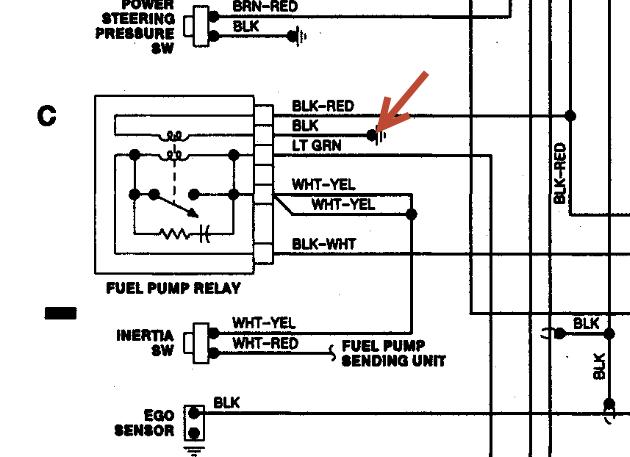Problem originated with a 'no start' condition. Cranked fine. However, no spark with an inline light at spark plug. I investigated distributor cap, rotor, coil, and everything seemed fine. However, no voltage at coil primary. I then disconnected the wiring harness at the fuel pump, and then had spark. My thought was that the fuel pump was defective and somehow drawing down the coil voltage. I replaced the fuel pump, and sure enough, the old one showed no resistance between + and -. But the problem wasn't fixed with the new pump. The fuel pump relay is sending only 5 to 6 volts to the pump. When the harness at the fuel pump is disconnected, the voltage level rises to 10 volts... But not immediately. In fact, sometimes, I read 5 to 6 volts at the fuel pump relay socket, with the relay removed. Therefore, my question is: where does the supply voltage at the fuel pump relay come from? It must not be directly from the battery. Or if it does, I must have a bad connection somewhere. I've bypassed the inertia switch, so that can't be it.
Also, my new fuel pump started with about 20 ohms between + and -, but now I see its down to about 7. I wonder if my repeated attemps of sending low voltage to the pump is damaging it.
Any help would be appreciated greatly. Thanks.
Saturday, April 27th, 2013 AT 8:20 PM




